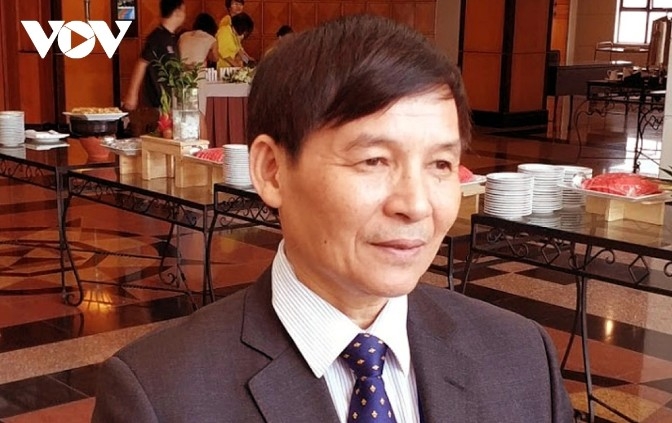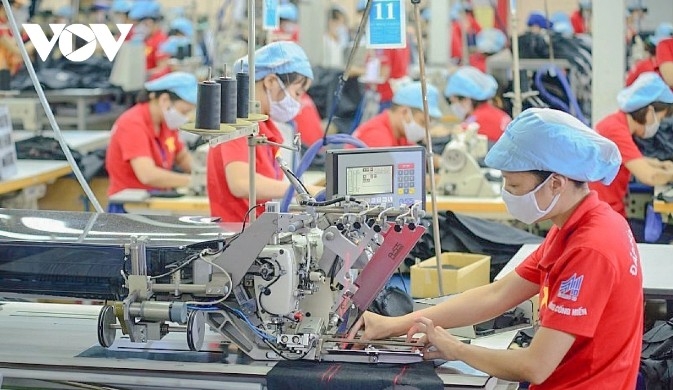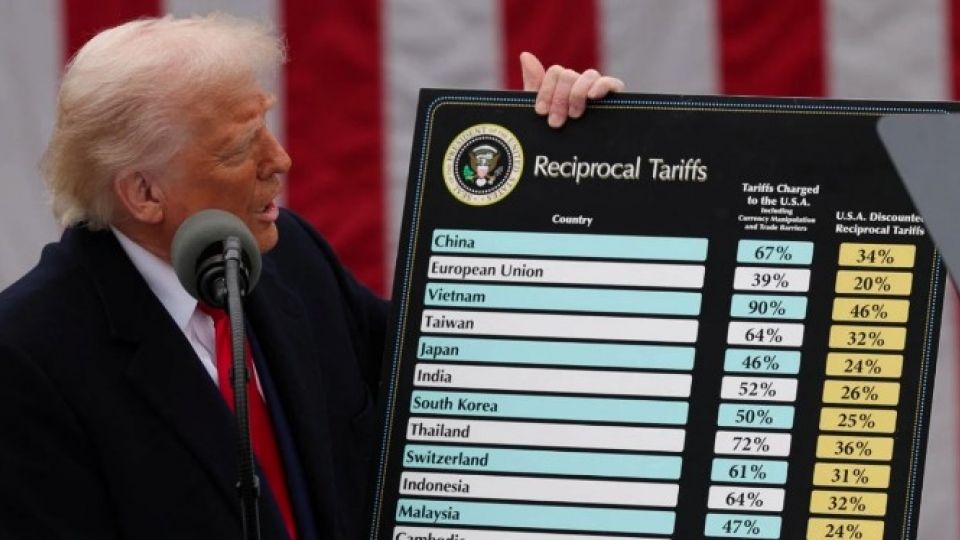Vitas: Vietnam's textile industry is not in full competition with US
VOV.VN - A representative from the Vietnam Textile and Apparel Association (Vitas) has provided insights into the current situation and proposed solutions in response to the 46% reciprocal tariff that the US is set to impose on goods imported from Vietnam.
At an urgent meeting chaired by Deputy Prime Minister Ho Duc Phoc, with participation from representatives of several textile companies in northern Vietnam on April 4, industry associations put forward a score of specific and practical measures for both the short and long term. These aimed to prompt the Vietnamese government to engage in negotiations with the US over the 46% reciprocal tariff on exports.
Truong Van Cam, Vice President of Vitas, reported that in 2024, the US imported US$16.6 billion worth of textile and apparel products from Vietnam, accounting for 38% of the industry's total export value. Meanwhile, Vietnam imported US$1.2 billion from the US, making up 4.8% of the total import value of the industry’s raw materials and accessories. These imports from the US included cotton (US$681 million), fabric (US$46 million), and raw materials (US$469 million).
“The impact of the 46% reciprocal tariff announced by the US on April 2 is significant and unexpected. It has caused considerable concern among textile companies, as profit margins in this industry are already slim. Businesses are currently facing intense competition with other textile exporting countries. The situation is especially challenging for companies when the tariff rate on Vietnam (46%) is much higher compared to other countries competing in the US market,” Cam explained.
Specifically, China is subject to a 34% reciprocal tariff (with China’s textile exports to the US, accounting for 24.62% of the total), India faces a 26% reciprocal tariff (with an export share of 8.87%), Bangladesh is taxed at 37% (with an export share of 6.73%), Indonesia 32% (4.39%), Mexico 25% (3.85%), Cambodia 49% (4.23%), Pakistan 29% (3.65%), Honduras 10% (2.24%), and Turkey 10% (2.35%).
According to Cam, Vietnam’s textile industry is not in full competition with the US, but it has gradually increased its market share against China’s textile exports. Since 2019, China’s share of garment and textile exports to the US has dropped from 32.8% to 24.62% in 2024.
“Vietnam’s garment and textile exports to the US not only create jobs for workers but also benefit US consumers with competitively priced products. A high tariff would significantly affect Vietnam’s ability to attract investment, particularly in areas where there is a shortage of textiles, such as fabric and dyeing, to meet the origin requirements of FTAs,” he expressed concerns.
Garment and textile industry proposes a range of solutions
In light of the US imposing the 46% reciprocal tariff, Cam also proposed several solutions for garment and textile businesses, including diversifying markets and boosting exports to markets covered by signed FTAs. Companies are collaborating with brands and buyers to share the challenges in fulfilling ongoing, signed, and produced orders. Businesses are also negotiating future contracts by sharing both the benefits and risks across the entire supply chain (from raw material suppliers to manufacturers, distributors, and end consumers), while enhancing traceability and transparency in raw material sourcing.

During the meeting, the Vice President of Vitas also urged the government to negotiate with the US to reduce the excessively high 46% tariff and to provide more detailed information on each product and product group, while allowing for specific solutions to gradually reduce the trade deficit between Vietnam and the US. The government needs to engage quickly with certain FTAs to tap into potential markets like Canada which in 2024 imported US$1.23 billion worth of apparel products from Vietnam, an increase of 147% from 2019.
The government should also consider introducing new policies to support businesses by reducing costs, such as further cutting VAT, import duties, land taxes, and corporate income taxes. There should also be reductions in contributions like the 2% trade union fee, social insurance, and cuts in road and port infrastructure fees. Banks need to continue to lower interest rates, reschedule debts, and maintain debt classifications for businesses.
The Vitas leader further urged the US Mission in Vietnam to deliver the message requesting a 2-3 month delay in applying the reciprocal tariff, allowing Vietnam time to negotiate and propose solutions to reduce the trade deficit with the US. He also recommended continued reductions in taxes on US imports and the consideration of fairer and more reasonable tax regulations.
On the evening of April 4 (Vietnam time), Party General Secretary To Lam held a phone call with US President Donald Trump. During their conversation, the top Vietnamese Party leader affirmed Vietnam’s readiness to discuss with the US a reduction of the import tariff to 0% on US goods.
He also proposed that the US apply a similar tax rate to goods imported from Vietnam, continue importing products that the US needs from the country, and encourage US companies to increase their investments in Vietnam. The two leaders agreed to continue their discussions in order to materialize these commitments soon through a bilateral agreement in the near future.




